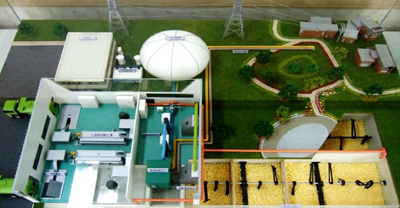Biomass comprises all organic materials, which are predominantly used for power-producing purposes. Utilization of biomass in power production has several advantages over other energy resources. It is renewable, it is a clear fuel, easily accessible and with low acquiring costs.
The biomass also includes organic household material, which ends up on dump sites. The most frequently used types of biomass in the power industry include quickly growing trees, cereals, grass, organic oil crops and starch-sugar crops. Other forms include waste biomass such as waste water sludge, organic communal wastes, food-processing industry wastes, sewage, manure, wood wastes, etc. Energy from the biomass can be obtained by a) incineration, b) fermentation, c) thermal disintegration.
Our technology applies a third way - thermal disintegration, i.e. the most efficient method, where the input material is heated to the temperature of 450-600°C for about two seconds in the reaction zone; the input material is processed into bio-oil, which represents 75 % of the input material, bio-gas with 13 % per volume and solid residue with 12 % per volume. The heat value of the bio-oil ranges from 16 MJ/kg to 25 MJ/kg according to the input material; its density lies within 1,150 kg/m3-1,250 kg/m3. The bio-oil can be used in power plants, heating plants, chemical industry, generators or cogeneration units. The oil can be easily stored and transported. Modified equipment, which processes woodchips, for example, can produce 10.8 MWe/day of electric power and 18 bvWt/day of heat from five tons of chipwood.
